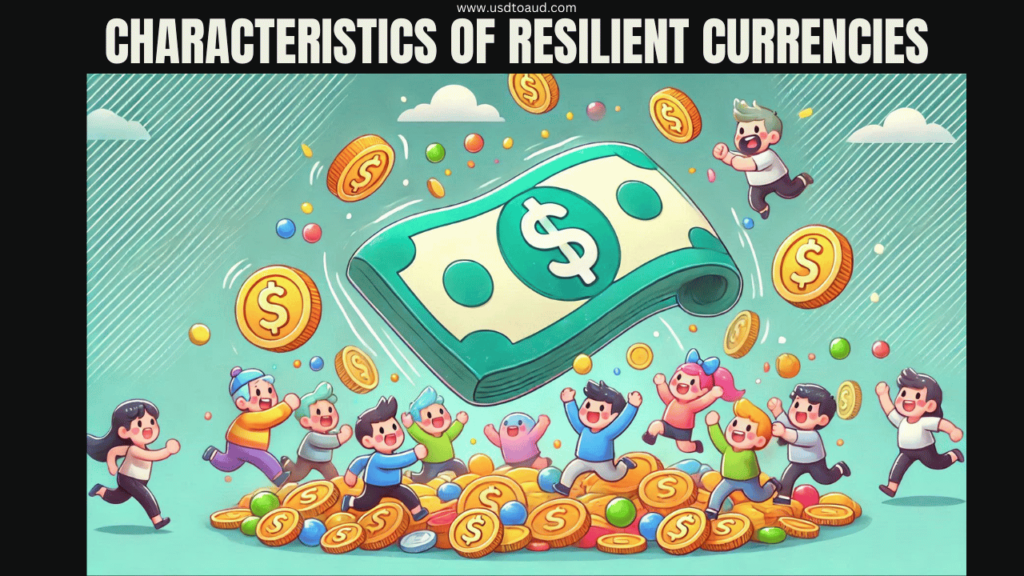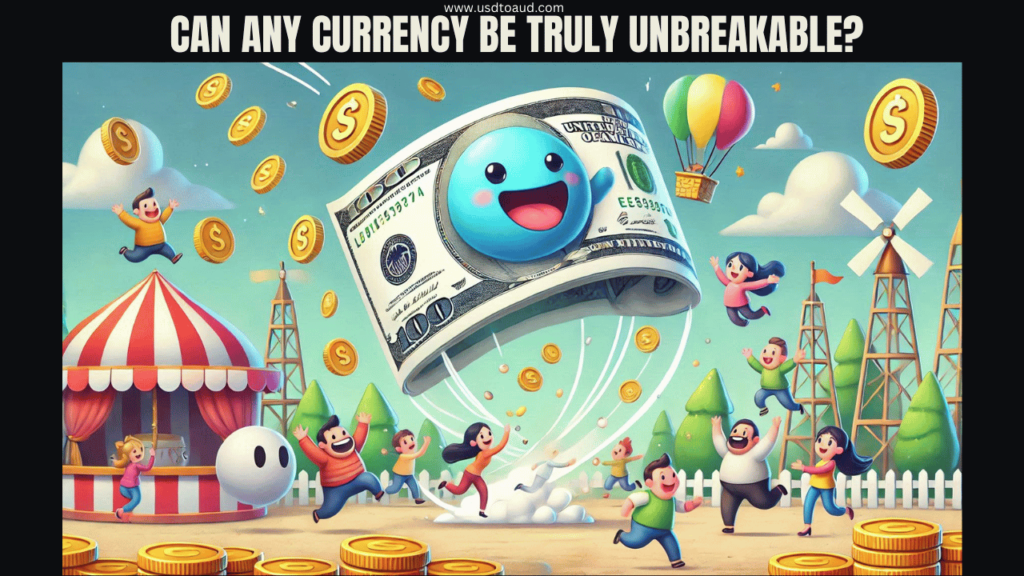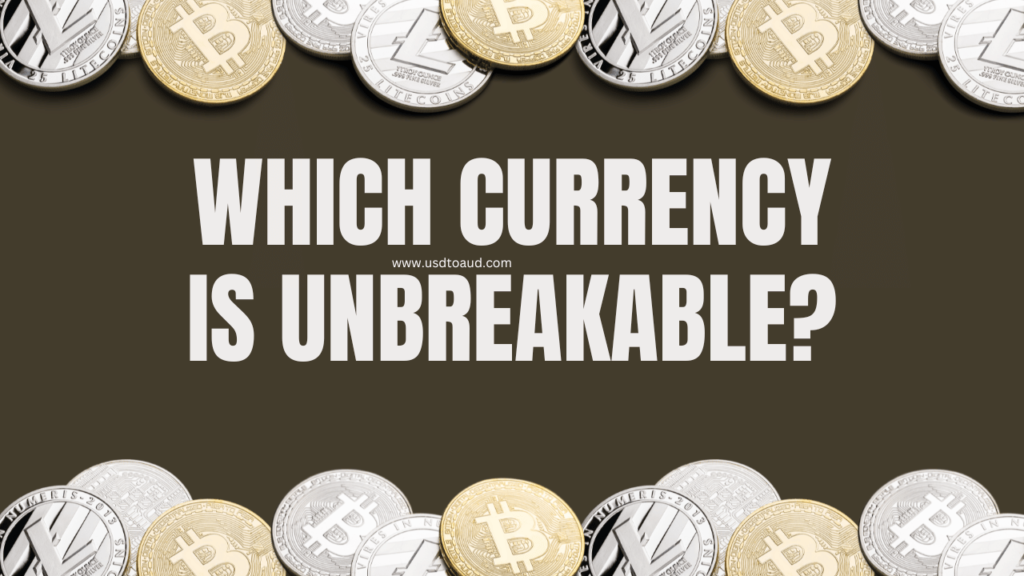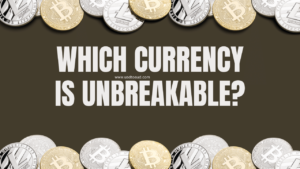The concept of an “unbreakable” currency is intriguing in economics and finance. While no currency is completely impervious to fluctuations and external influences, some currencies exhibit extraordinary stability, resilience, and global trustworthiness.
These “unbreakable” currencies often serve as safe havens in times of economic turmoil and maintain their value across different market conditions.
In this article, we’ll explore what makes a currency “unbreakable,” examine some of the world’s most resilient currencies, analyze their underlying strengths, and discuss potential risks to their stability. We will also include tables to provide a comparative analysis and offer a comprehensive understanding of these currencies.
The Concept of “Unbreakable” Currency
An unbreakable currency is one that demonstrates:
- Long-term Stability: Consistent value over decades.
- Global Acceptance: Used widely in international trade and finance.
- Economic Resilience: Resistant to economic shocks and crises.
- Trust in Issuing Authority: Backed by strong, transparent institutions.
- Limited Volatility: Low susceptibility to market speculation and rapid changes.
While no currency can claim absolute unbreakability, some currencies exhibit traits that make them more reliable and stable than others.
Characteristics of Resilient Currencies
The following factors contribute to the resilience of a currency:
- Strong Economy: A robust and diversified economy ensures consistent demand for a country’s currency.
- Low Inflation: Stable prices enhance trust in a currency’s long-term value.
- Fiscal Discipline: Governments with prudent fiscal policies bolster currency stability.
- Political Stability: A stable political environment reduces uncertainties affecting the currency.
- Global Reserve Status: Currencies used as reserves by central banks tend to be more stable.
- Controlled Money Supply: Limiting excessive printing of money prevents inflationary pressures.

Examples of Resilient Currencies
1. United States Dollar (USD)
- Why It’s Resilient:
The U.S. Dollar is the world’s primary reserve currency, widely used in global trade and finance. The U.S. has the largest economy, and its government bonds are considered some of the safest investments. - Risks:
High government debt and potential political instability pose risks to its long-term dominance.
| Metric | USD |
|---|---|
| Reserve Status | Primary global reserve currency |
| Inflation (2023) | ~3.2% |
| Share in Forex Reserves | ~59% |
2. Swiss Franc (CHF)
- Why It’s Resilient:
The Swiss Franc is known for its stability and is often a safe haven during global crises. Switzerland’s political neutrality and strong banking sector support its currency. - Risks:
Dependence on external trade and potential overvaluation during crises.
| Metric | CHF |
|---|---|
| Reserve Status | Safe-haven currency |
| Inflation (2023) | ~1.5% |
| Share in Forex Reserves | ~2.5% |
3. Euro (EUR)
- Why It’s Resilient:
The Euro represents the collective strength of 20+ European economies, providing it with significant backing. It is the second most widely held reserve currency globally. - Risks:
Political differences among member states and reliance on external energy supplies.
| Metric | EUR |
|---|---|
| Reserve Status | Secondary global reserve currency |
| Inflation (2023) | ~5% |
| Share in Forex Reserves | ~20% |
4. Japanese Yen (JPY)
- Why It’s Resilient:
The Japanese Yen is a major reserve currency, backed by Japan’s strong industrial economy and significant foreign investments. - Risks:
High national debt and an aging population could affect long-term economic growth.
| Metric | JPY |
|---|---|
| Reserve Status | Significant reserve currency |
| Inflation (2023) | ~3.3% |
| Share in Forex Reserves | ~6% |
5. British Pound (GBP)
- Why It’s Resilient:
The British Pound benefits from the UK’s financial sector dominance and long history as a global trade hub. - Risks:
Post-Brexit economic uncertainties and reliance on financial services.
| Metric | GBP |
|---|---|
| Reserve Status | Moderate reserve currency |
| Inflation (2023) | ~4.6% |
| Share in Forex Reserves | ~5% |
Factors That Threaten Currency Stability
No currency is entirely unbreakable, as various risks can affect its value:
- Economic Crises: Recessions or banking collapses can reduce trust in a currency.
- Hyperinflation: Excessive money printing can devalue a currency rapidly.
- Geopolitical Tensions: Wars, sanctions, or political unrest can weaken a currency’s value.
- Technological Disruption: Cryptocurrencies and digital payment systems may challenge traditional currencies.
Comparative Analysis of Resilient Currencies
The table below provides a comparative analysis of major resilient currencies based on key metrics:
| Currency | Global Reserve Share | Inflation Rate (2023) | Safe-Haven Status | Key Strengths |
|---|---|---|---|---|
| USD | ~59% | ~3.2% | Yes | Global reserve currency |
| CHF | ~2.5% | ~1.5% | Yes | Neutrality, strong banking sector |
| EUR | ~20% | ~5% | Moderate | Economic bloc strength |
| JPY | ~6% | ~3.3% | Yes | Industrial economy, investments |
| GBP | ~5% | ~4.6% | Moderate | Financial sector dominance |
The Debate: Can Any Currency Be Truly Unbreakable?
While some currencies exhibit remarkable resilience, the concept of an unbreakable currency is debatable. The following points highlight this debate:
Arguments Supporting the Idea of Unbreakable Currencies
- Intrinsic Trust: Currencies like the USD and CHF have established trust over decades.
- Global Acceptance: The widespread use of these currencies reduces risks of obsolescence.
- Economic Backing: Strong economies provide a solid foundation for these currencies.
Counterarguments
- Dependence on Governments: Even resilient currencies rely on government policies and central banks, which can make mistakes.
- Market Forces: Speculation, inflation, and geopolitical factors can affect any currency.
- Technological Challenges: The rise of cryptocurrencies may disrupt traditional currencies.

Conclusion
While no currency is completely immune to external pressures, certain currencies like the USD, CHF, EUR, JPY, and GBP demonstrate extraordinary stability and resilience.
These currencies are backed by strong economies, prudent monetary policies, and global trust. However, even the most stable currencies face potential risks from economic crises, geopolitical tensions, and emerging technologies.
The closest contenders for “unbreakable” status are the USD and CHF, given their global acceptance and safe-haven roles. However, the future of global finance may challenge traditional notions of currency resilience as new digital technologies and economic paradigms emerge.
FAQs
1. What does “unbreakable currency” mean?
An unbreakable currency refers to one that demonstrates exceptional stability, trust, and resilience against economic and geopolitical pressures.
2. Is the U.S. Dollar truly unbreakable?
The U.S. Dollar is highly resilient due to its global reserve status and backing by the world’s largest economy, but it is not immune to risks like inflation and debt.
3. Why is the Swiss Franc considered a safe haven?
The Swiss Franc is backed by Switzerland’s political neutrality, strong banking system, and low inflation, making it a trusted currency during global crises.
4. Can cryptocurrencies be considered unbreakable?
Cryptocurrencies like Bitcoin are decentralized and resistant to some traditional risks, but they are highly volatile and face regulatory challenges, which makes them less stable than established currencies.
5. What factors could disrupt currency stability?
Economic crises, hyperinflation, geopolitical tensions, and technological changes are some of the factors that can disrupt the stability of even the most resilient currencies.

















